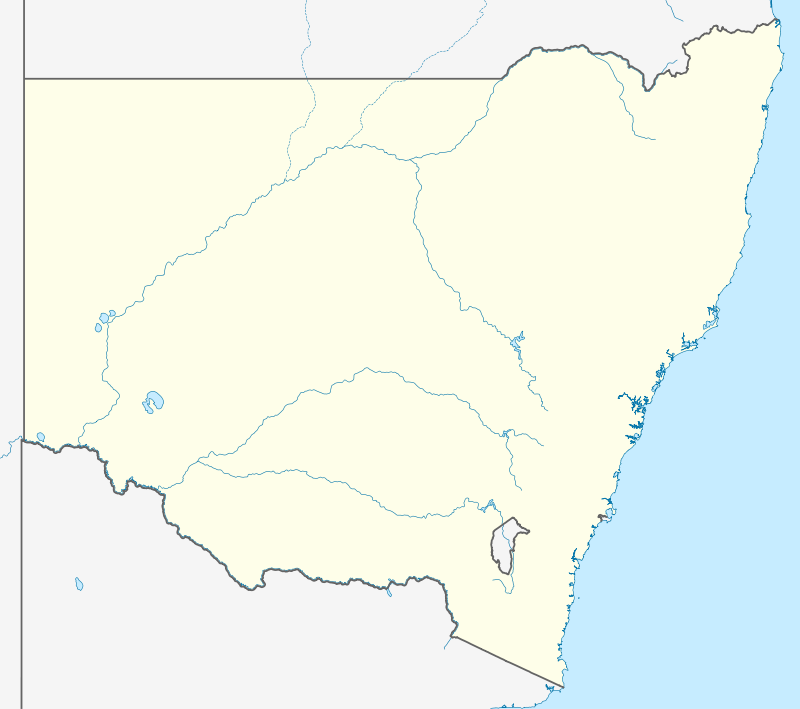Tomago, New South Wales
Tomago is a combined industrial/semi-rural suburb of the Port Stephens local government area in the Hunter Region of New South Wales, Australia.[2] It is located just north of the Hunter River and west of the body of water known as Fullerton Cove.[6] Tomago means "sweet water" in the local Aboriginal language.[3]
| Tomago New South Wales | |||||||||||||||
|---|---|---|---|---|---|---|---|---|---|---|---|---|---|---|---|
Hexham Bridge, seen from Tomago, connects Port Stephens to Newcastle | |||||||||||||||
 Tomago | |||||||||||||||
| Coordinates | 32°49′48″S 151°43′15″E | ||||||||||||||
| Population | 277 (2016 census)[1] | ||||||||||||||
| • Density | 7.1/km2 (18/sq mi) | ||||||||||||||
| Postcode(s) | 2322 | ||||||||||||||
| Elevation | 3 m (10 ft)[Note 1] | ||||||||||||||
| Area | 38.1 km2 (14.7 sq mi)[Note 2] | ||||||||||||||
| Time zone | AEST (UTC+10) | ||||||||||||||
| • Summer (DST) | AEDT (UTC+11) | ||||||||||||||
| Location |
| ||||||||||||||
| LGA(s) | Port Stephens Council[2] | ||||||||||||||
| Region | Hunter[2] | ||||||||||||||
| County | Gloucester[3] | ||||||||||||||
| Parish | Stockton[3] | ||||||||||||||
| State electorate(s) | Port Stephens[4] | ||||||||||||||
| Federal Division(s) | Paterson | ||||||||||||||
| |||||||||||||||
| |||||||||||||||
Geography
Tomago is primarily flat with sandy soil and is surrounded on three sides by water. The Hunter River flows around the western and southern borders of the suburb. To the east is Fullerton Cove. There is no direct access to the land portion of the neighbouring suburbs of Tarro, Kooragang or Fullerton Cove. Access to and from Hexham is only possible via the Hexham bridges, which are actually located in the suburb of Tarro.
Industry
Major industrial sites in the area are the Tomago aluminium smelter, Forgacs Shipyard, and the Tomago Sandbeds water treatment works. Until 1999, ABB Engineering Construction maunfactured coal wagons for the Hunter Valley Coal Chain.[7][8] In 2009 Volgren opened a factory to body buses, it closed in 2012.[9][10]
Hunter Region Botanic Gardens
The Hunter Region Botanic Gardens are adjacent to the eastern side of the Pacific Highway in the north of the suburb. The gardens cover an area of 140 ha (346 acres), including 30 ha (74 acres) of themed parks and 105 ha (259 acres) of natural bushland.[11]
Tomago House
Tomago House and its nearby chapel are heritage listed buildings on Tomago Road, the main road through the suburb, which provides access from the Pacific Highway to Newcastle Airport.[12] The chapel is approximately 250 m (820 ft) to the west of Tomago House on a different block of land.
Notes
- Average elevation of the suburb as shown on 1:100000 map 9232 NEWCASTLE.
- Area calculation is based on 1:100000 map 9232 NEWCASTLE.
References
| Wikimedia Commons has media related to Tomago, New South Wales. |
- Australian Bureau of Statistics (27 June 2017). "Tomago (State Suburb)". 2016 Census QuickStats. Retrieved 26 July 2018.

- "Suburb Search - Local Council Boundaries - Hunter (HT) - Port Stephens". New South Wales Division of Local Government. Archived from the original on 21 June 2014. Retrieved 15 June 2008.
- "Tomago". Geographical Names Register (GNR) of NSW. Geographical Names Board of New South Wales. Retrieved 15 June 2008.

- "Port Stephens". New South Wales Electoral Commission. Retrieved 23 November 2019.
- "Williamtown RAAF". Climate statistics for Australian locations. Bureau of Meteorology. Retrieved 15 June 2008.
- "Tomago". Land and Property Management Authority - Spatial Information eXchange. New South Wales Land and Property Information. Retrieved 15 June 2008.
- ABB closes plant as coal wagons delivered Railway Digest August 1999 page 13
- Here & There Australian Railway Historical Society Bulletin issue 744 October 1999 page 392
- First NSW made Volgren hits the streets Australasian Bus & Coach 29 June 2009
- Volgren Tomago Closes Australian Bus Panorama issue 28/2 September 2012 page 35
- "About Us". Hunter Region Botanic Gardens. Archived from the original on 17 September 2016. Retrieved 9 September 2016.
- "Tomago House & Tomago Chapel". New South Wales State Heritage Register. Office of Environment and Heritage. H00207. Retrieved 18 May 2018.